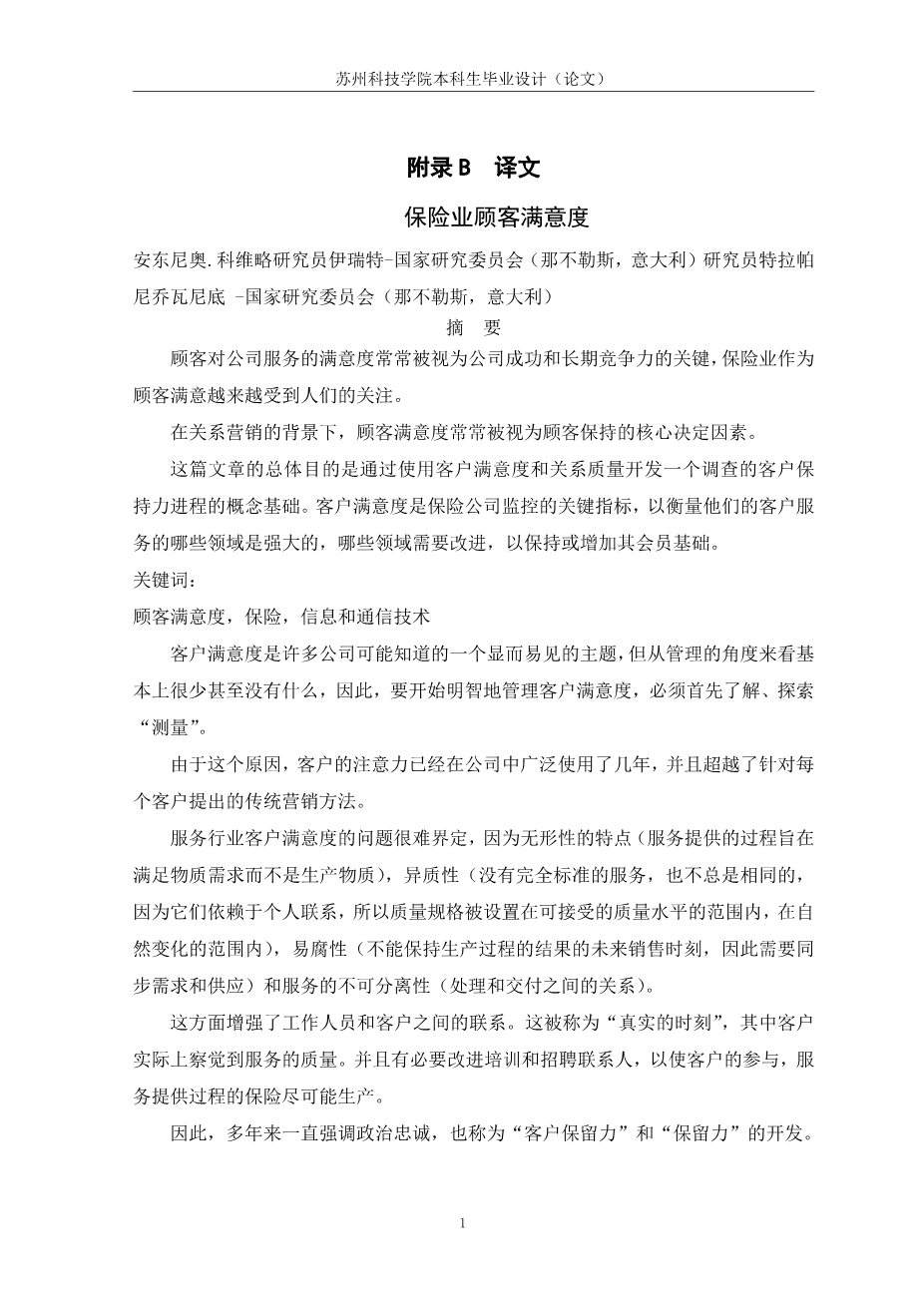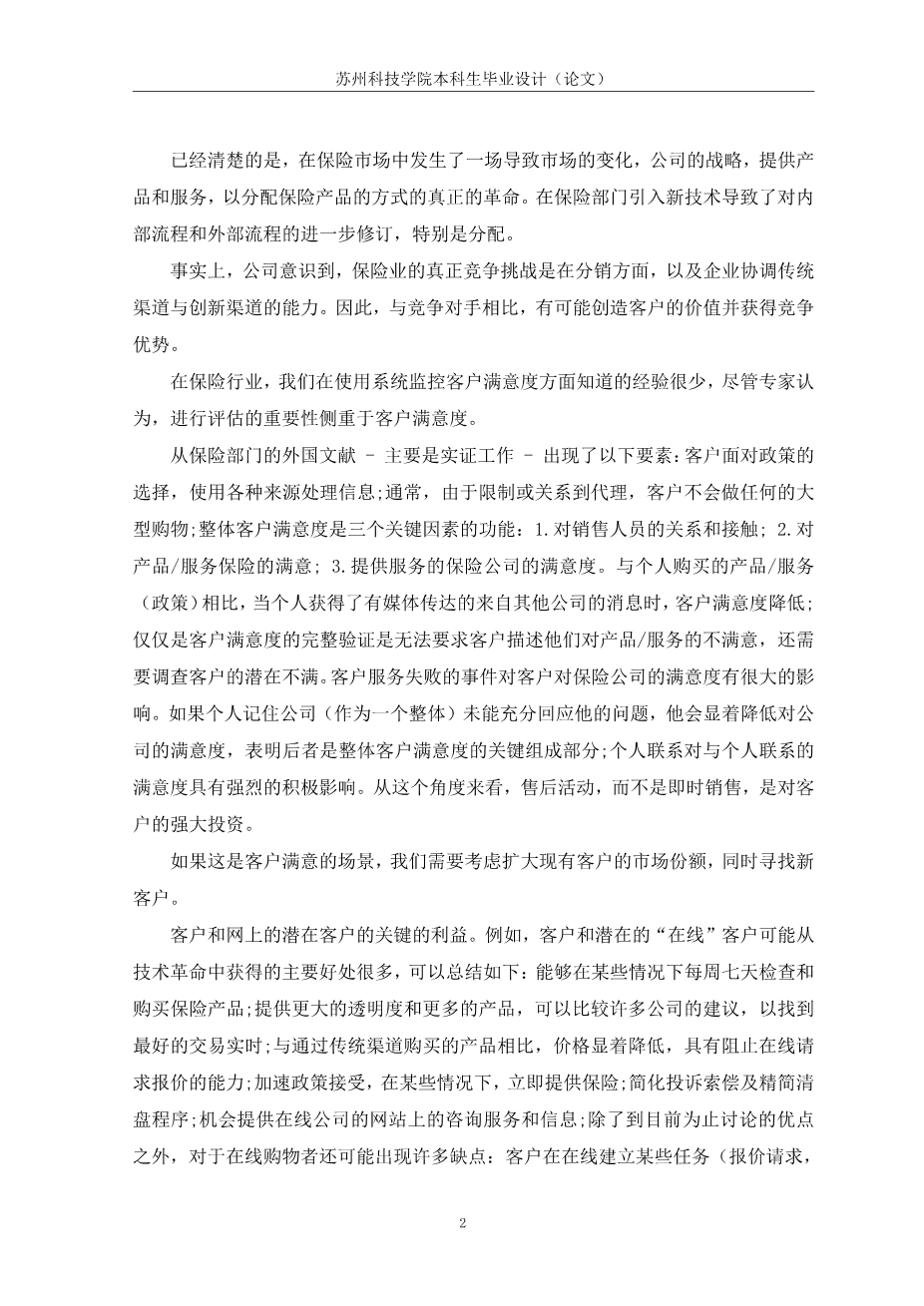THE CUSTOMER SATISFACTION IN THE INSURANCE INDUSTRY
Antonio Coviello - researcher at IRAT-CNR (Naples, Italy)
Giovanni Di Trapani - researcher at IRAT-CNR (Naples, Italy)
Abstract
Customer satisfaction with a company’s services is often seen as the key to a company’s success and long-term competitiveness .The insurance industry is getting a lot of attention as customer satisfaction.
In the context of relationship marketing, customer satisfaction is often viewed as a central determinant of customer retention.
The overall purpose of this article is to develop a conceptual foundation for investigating the customer retention process, with the use of the concepts of customer satisfaction and relationship quality. Customer satisfaction is a key metric for insurance companies to monitor in order to gauge which areas of their customer service are strong and which areas need improvement in order to maintain or increase their membership base.
Key words:
Customer satisfaction, Insurance, ICT
Customer satisfaction is an obvious topic perhaps known by many companies, but basically little or nothing from the management point of view, so , to start the wise management of customer satisfaction, it must first be known, explored and therefore, '"measured".
For this reason, the customer’s attention has been widespread in the companies for a few years and it goes beyond the traditional marketing approaches proposed by the attention to each customer.
The issue of client satisfaction in service industries is difficult to define, because of the characteristics of intangibility (the process of service delivery is aimed at satisfying the need and not the production of a physical good), heterogeneity (there are no exactly standards services ,nor always identical to themselves , because they depend from company to company , depending on personal contact ,so the quality specifications are set within a range of acceptable quality levels within a margin of natural variation),perishability(inability to keep the results of production processes of future moments of sale , hence the need to synchronize demand and supply) and inseparability (the tine between processing and delivery) of the service.
This aspect enhances the contact between staff and customers. This is called the "moment of truth", in which the customer perceives the quality of the service actually. And it’s 'necessary to improve training and recruitment of contact, in order to make the customer's participation, the process of service delivery insurance, as productive as possible.
For this reason, it’s been years since it was given emphasis to political loyalty, also called "customer retention" and exploitation of the "retention"5.
It has become clear that in the insurance market there has been a real revolution that has led to changes in the market, strategies of companies, offering products and services, in the manner of distribution of insurance products. The introduction of new technologies in the insurance sector has led to further revisions to both the internal processes and to external ones for the companies, especially distribution.
In fact, companies are aware of the fact that the real competitive challenge in the insurance sector is to play on the distribution front and on the ability of firms to coordinate the traditional channels with the innovative ones. Thereby, it will be possible to create customers’ values and gain competitive advantage compared to competitors.
In the insurance sector, we know little experience using systems to monitor client satisfaction, although it is felt among the experts, the importance of conducting evaluations focused on customer satisfaction.
From the foreign literature in the insurance sector - mostly empirical work - the following elements emerge: The customer, faced with the choice of the policy, processes information using a variety of sources; Usually, the customer does not do any large shopping , limited or referred to an agent; The overall client satisfaction is a function of three key elements:1.satisfaction about the relationship and contact with sales staff; 2. satisfaction about the product / service insurance; 3. satisfaction with the insurance company providing the service6. The client satisfaction, compared to his own product/service purchased (the policy), decreases when an individual has been exposed to messages from other companies, conveyed by the media; For a complete verification of client satisfaction is not enough to ask the customers to describe their dissatisfaction about the products / services but also the latent dissatisfaction of customers7 should be investigated. Events where the customer service has failed, have a strong impact on customer satisfaction against the insurance company. If the individual remembers where the company (as a whole) has failed to adequately respond to his problem, it significantly reduces the satisfaction with the company, demonstrating that the latter is the key component of client satisfaction overall; Personal contacts have a strong positive impact in relation to satisfaction with personal contact. In this perspective, post-sales activities, while not an immediate sales, are a strong investment in the client.
If this is the scenario where to play the satisfaction of the customer, we need to think about expanding the market share of existing customers, and while looking for new ones
The key benefits that customers and potential "online" customers, for example, may have from the technological revolution are numerous and can be summarized as follows8: Ability to examine and, in some cases, to buy insurance products any time, seven days a week; Offer greater transparency and access to a larger number of products, with the possibility to compare the proposals of many companies to find the best deal in real time; Significant price reductions compare
剩余内容已隐藏,支付完成后下载完整资料


英语译文共 6 页,剩余内容已隐藏,支付完成后下载完整资料
资料编号:[485795],资料为PDF文档或Word文档,PDF文档可免费转换为Word


